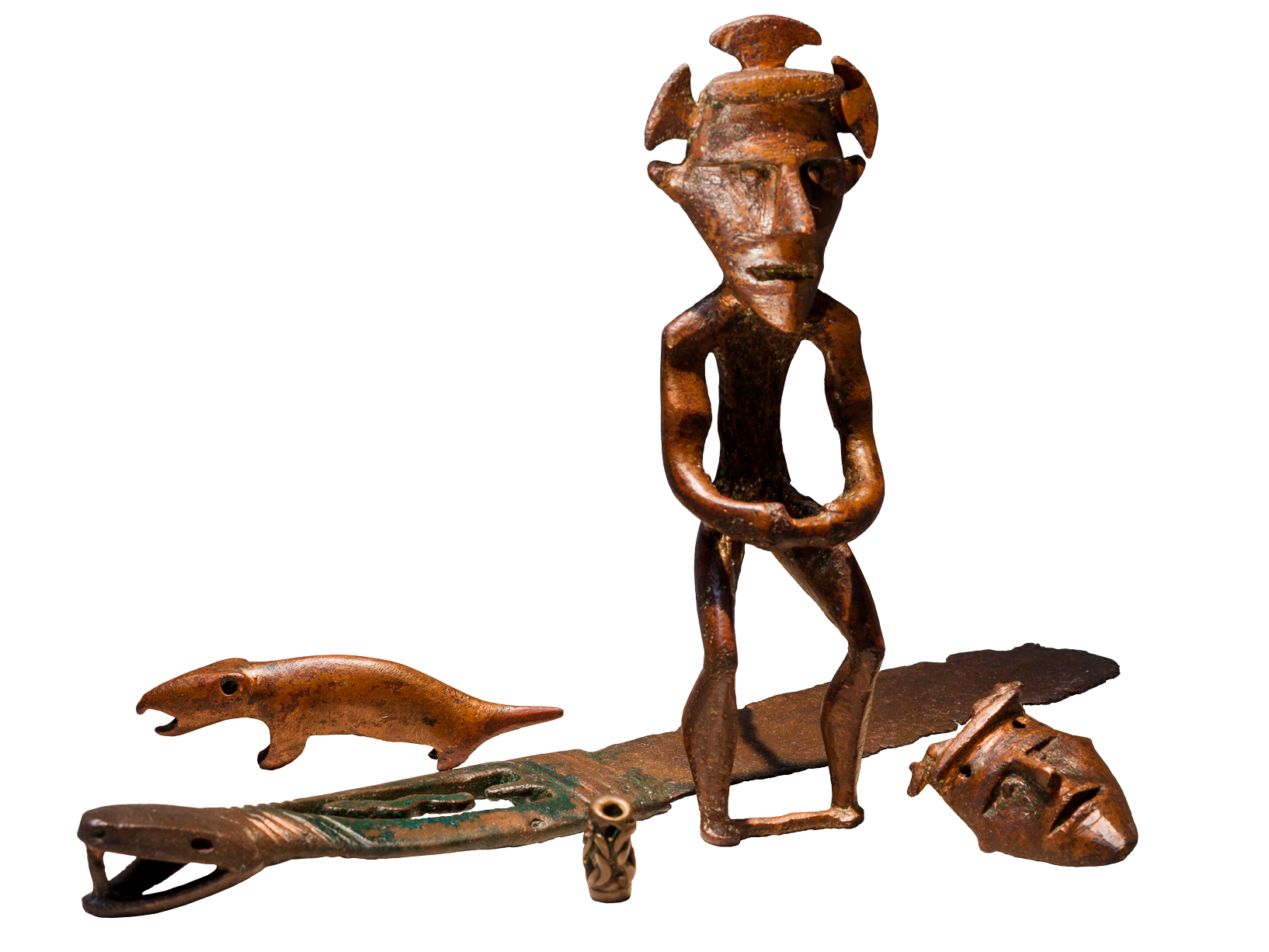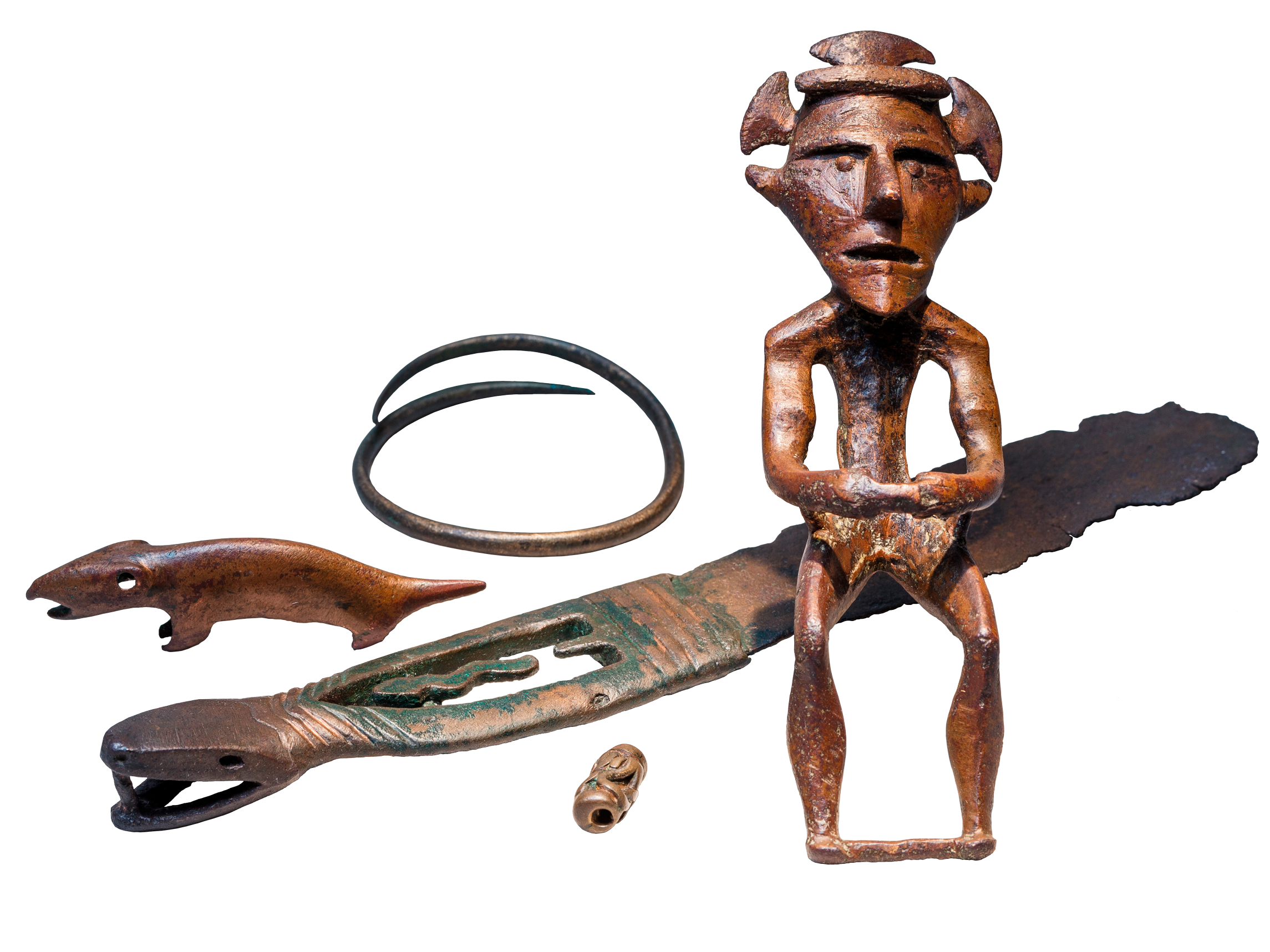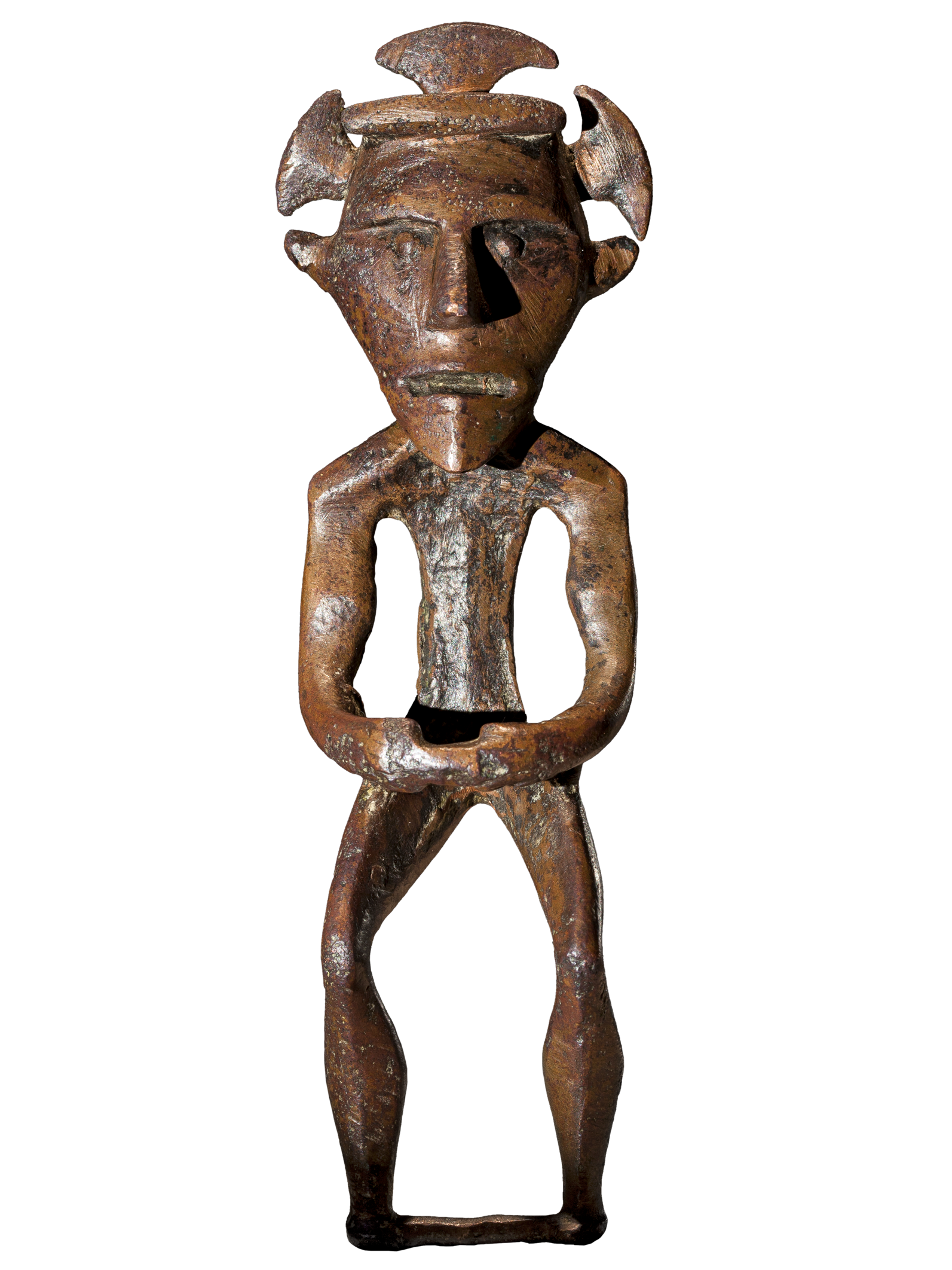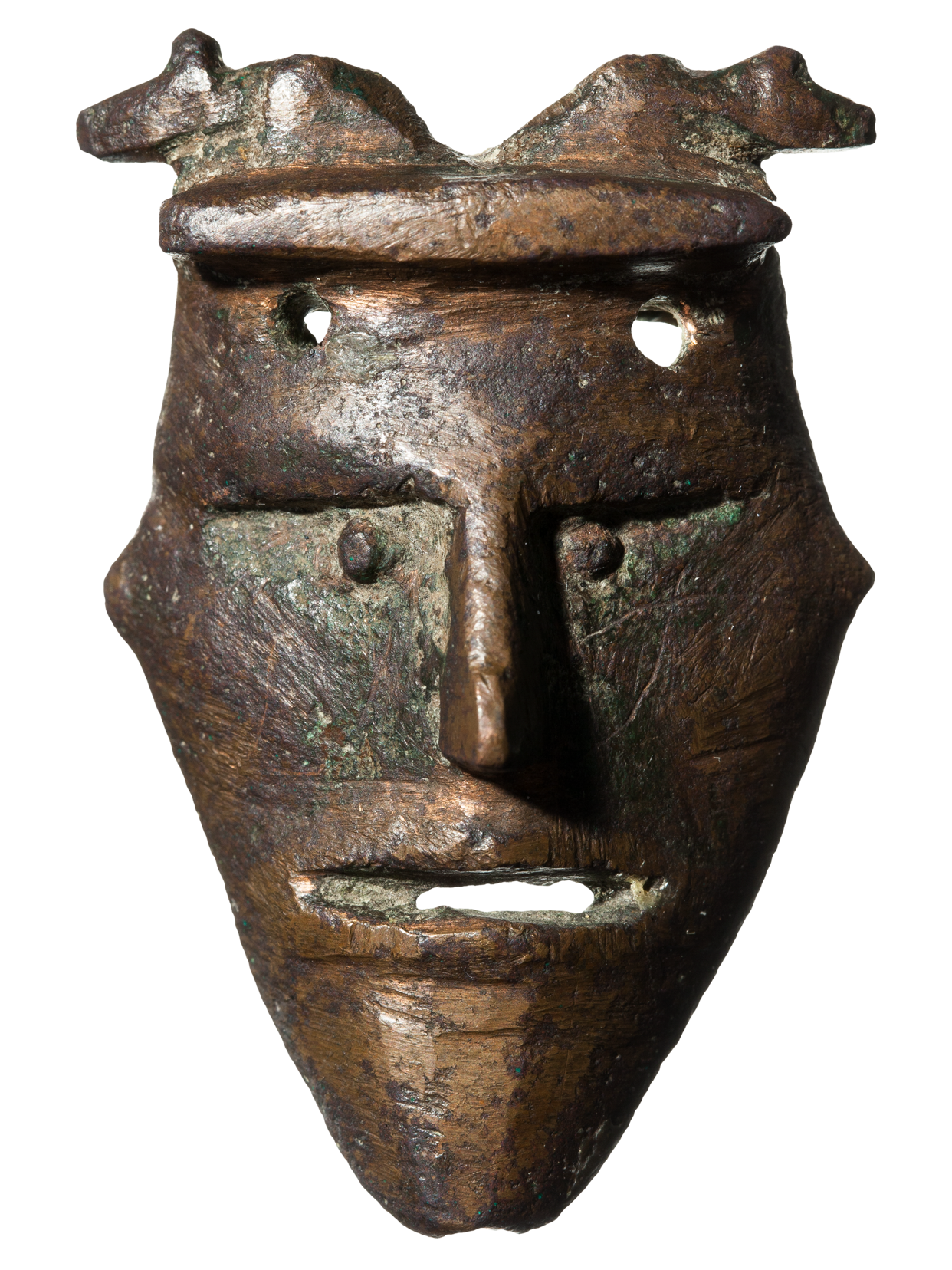The Galich Treasure




The Galich treasure contains different items: details of shamans’ costume, a ceremonial dagger, zoomorphic and anthropomorphic figures. History divided the treasure to three parts, that nowadays are kept in three different museums: The Hermitage, the Galichmuseum in Kostroma region and in the State Historical Museum. The most magnificent part is presented in our museum and contains six items. The central item is a cooper figure of idol – a man in dancing pose or performing a ritual. Apparently the mask decorated with elements looking like lunulas or beasts ears is placed on his face. The treasure also contains another similar mask with a straight nose, hanging superciliums, deepened eye-pits and relief apples of eyes, a bit opened mouth. It is decorated with figures of animals at the top.
Other interesting items are a dagger, decorated with a snake in a slot of a handle and with its head in the bottom, and a figure of a pangolin or another fantastic beast with wide paws and short tail. Among the details of clothing and decorative items a small cylindrical bead with flower ornament and a bracelet of thin wire are presented. The analysis of these items allows to date these findings to the turn of the III-II millenniums BC and to identify them with tribes of nomadic graziersand metal-makers from a far region of the Nothern Asia in origin and connected to the antiquities of so-called Seima-Turbino sites.
Exhibits' purpose of use. The Galich treasure was some kind of pagan sacristy of an ancient shaman. Idols and figures of animals were probably spirits-assistants for the shaman that with other items helped him to perform his magical actions.



